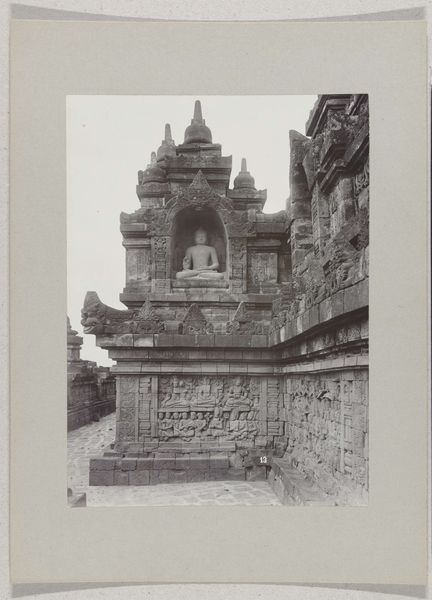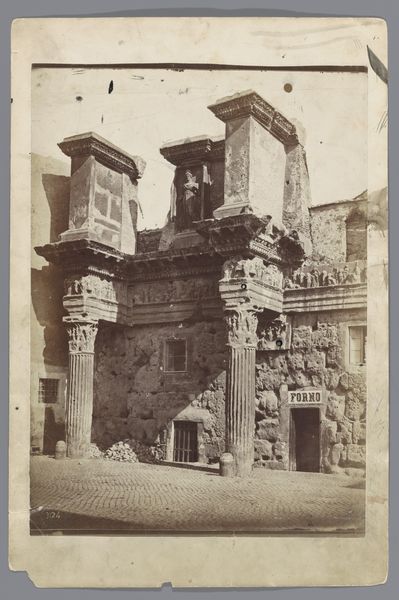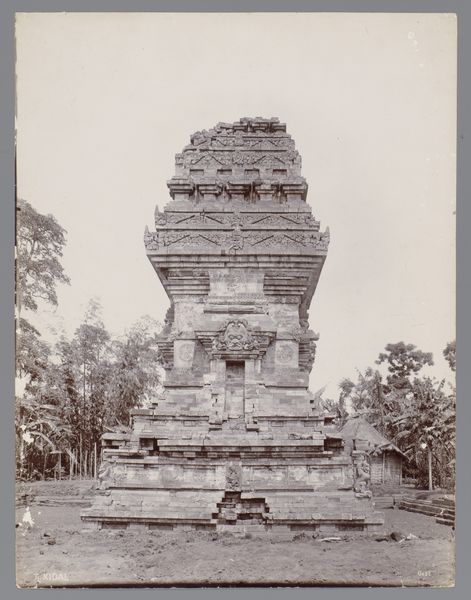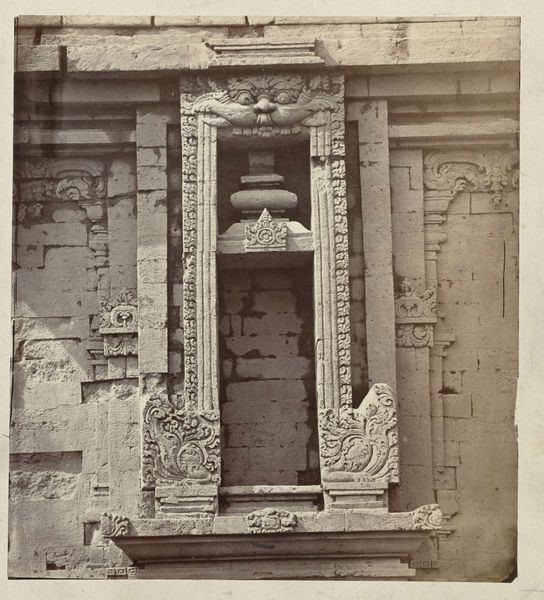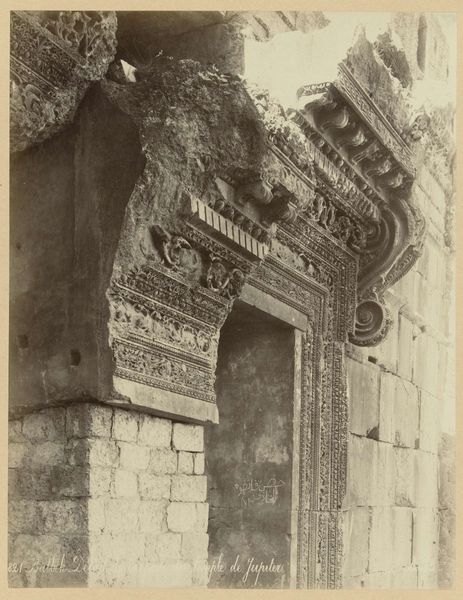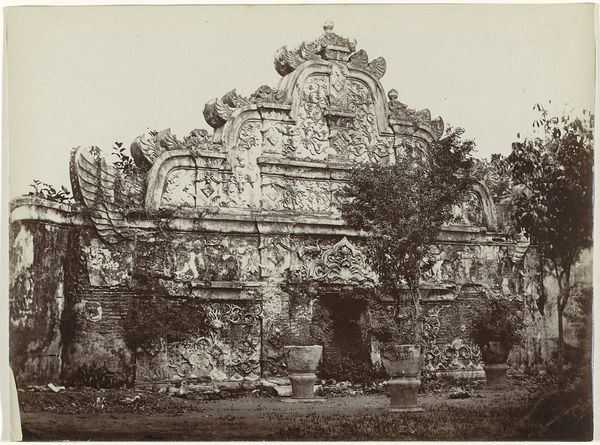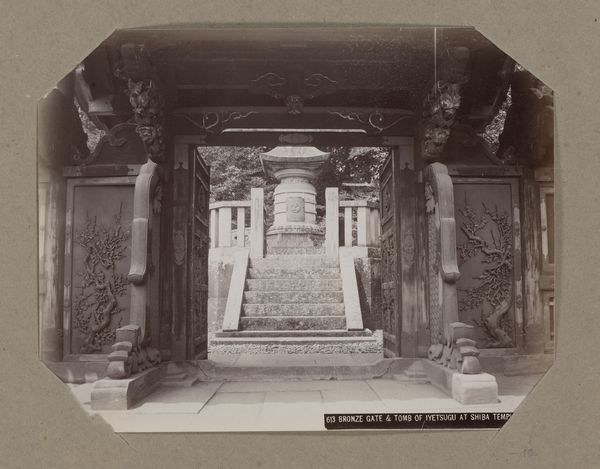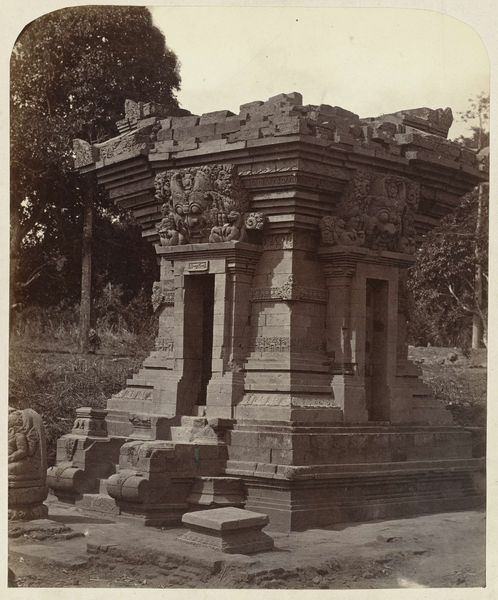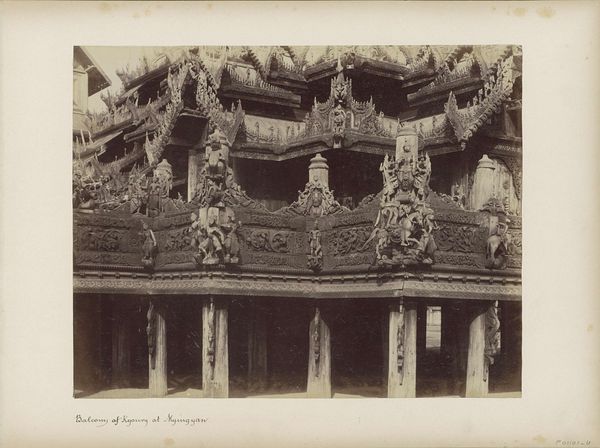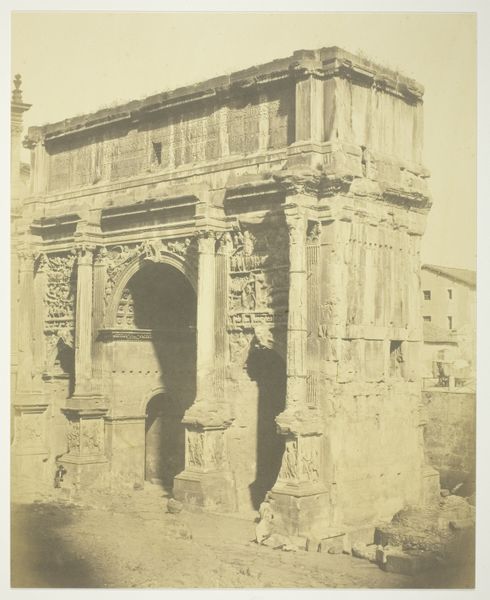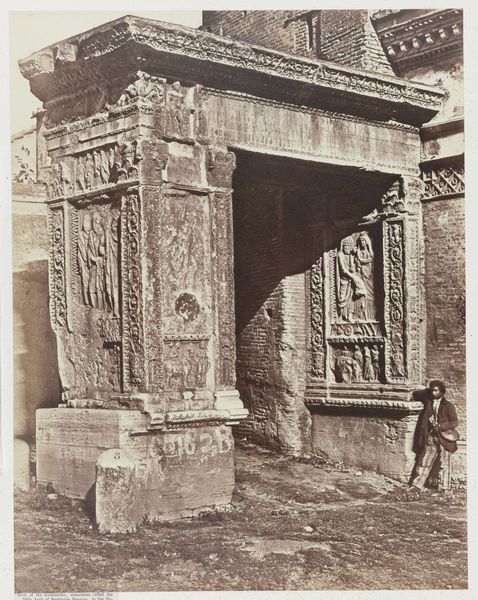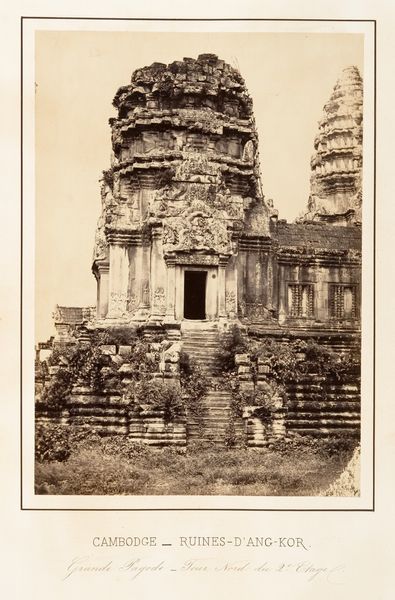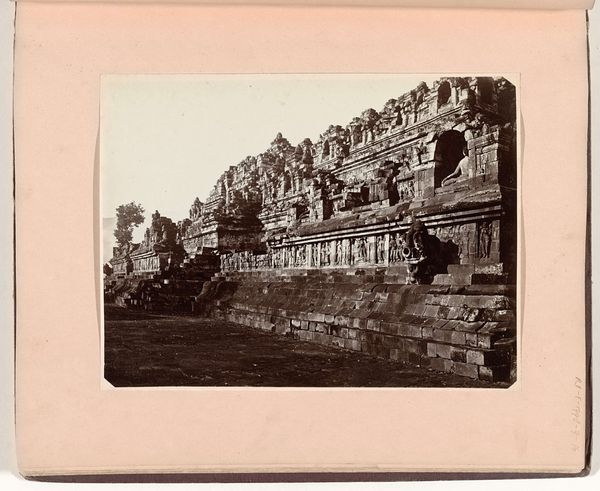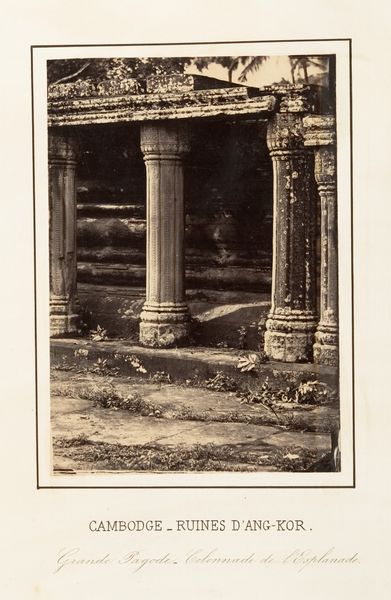
Poort met reliëfs van de Borobudur (Boroboedoer), nabij Magelang, Nederlands-Indië. c. 1895 - 1915
0:00
0:00
relief, photography, sculpture, architecture
#
sculpture
#
relief
#
landscape
#
photography
#
geometric
#
ancient-mediterranean
#
sculpture
#
islamic-art
#
architecture
Dimensions: height 241 mm, width 179 mm, height 243 mm, width 329 mm
Copyright: Rijks Museum: Open Domain
Editor: We're looking at "Poort met reliëfs van de Borobudur (Boroboedoer), nabij Magelang, Nederlands-Indië," a photograph by Onnes Kurkdjian, dating from around 1895-1915. The subject matter seems to be stone architecture, probably religious in nature. The strong symmetry in its composition is rather captivating. What aspects stand out to you? Curator: The robust geometricity is immediately apparent. Note how the orthogonal lines of the staircase juxtapose against the curvilinear nature of the reliefs, creating a compelling tension. It asks how the sacred space functions in terms of symbolic representation, both forbidding and inviting to the viewer, doesn’t it? Editor: Absolutely, it does! It is almost as though a mythical figure stands guardian above the gate. How does photography as a medium play a role here? Curator: The grayscale of the photograph renders the sculpture into almost pure form, highlighting the abstract qualities of its components. See how the use of shadow models shapes. The lines of perspective also pull you toward the source, don't you find? Editor: Yes, very much. It does bring forward an inherent depth in an otherwise fairly shallow space. I guess focusing on form enables new conversations and understandings that one could simply miss in everyday experience. Curator: Indeed, this exercise makes visible the importance of shape, form, and geometry. Editor: Thank you. I found that really insightful and thought-provoking!
Comments
No comments
Be the first to comment and join the conversation on the ultimate creative platform.
